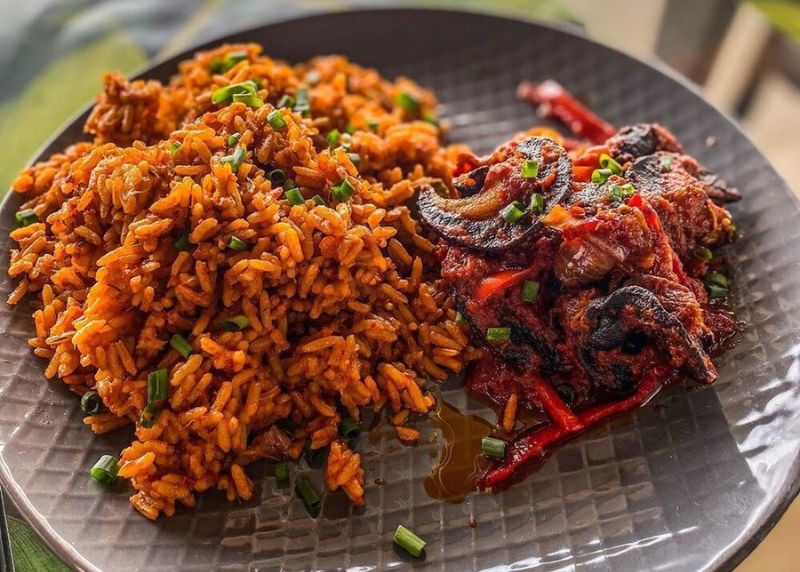Once, back in the last century, when Miss Manners-style etiquette started to slip, it became standard food-lovers' practice to share delicious little morsels with each other à la table. Intimate coaxing rituals - ‘You simple must taste this divine lièvre royal’ - became not just acceptable, but de rigeur. As you thrust a spoonful in the face of your inamorata, the prophetic words echoed throughout the land. Eating from someone else’s plate? The very idea seemed both transgressive and cosmopolitan.
As more communal ways of eating became increasingly familiar, and a millennial generation discovered the Insta-potential of Spanish tapas, Middle Eastern mezze, Italian antipasto, French hors d’oeuvre, and Cantonese dim sum, bastardisation was bound to follow along with conceptual absurdities. Original constructs of ‘teasing the appetite’ or eating a little something so as not to drink too much on an empty stomach became inflated or distorted until little snacks were transmogrified into full meals.
There has become no distinction, for example, between the classic Spanish tapa (as small as a green olive with a glass of sherry) and a plate of raciones (a portion of cured ham, perhaps, to serve as more than a snack but not enough as a first course). Indeed, the whole familiar menu edifice of starters, mains, sides soon started to collapse as restaurants (and customers, it must be said) became enthralled to a new, informal, less rigid mode of eating. The words ‘dinner party’ took on a new meaning, with an emphasis on the latter word.
As the new century progressed, the goal soon became to offer as many flavours as possible to stimulate a bored super-sophisticated palate. Step forward the now ubiquitous (and frequently endless) ‘tasting menu’. Prices for these few showcase bites tend towards the sky-high; a more accessible approach was shared plate.
A selection or sequence of ‘small plates’ certainly has its advantages and proponents. Many diners like the idea of being able to sample the range of dishes the kitchen can offer. Rather as the idea of a cruise appeals to those who like to test out, the small plates menu is a way to dip an exploratory fork into terroirs unknown without committing to the full-blown gastro-experience. It can ease agony of choice, the dilemma between selecting the (relatively) tried and tested and the challenge of the unknown. After all, if there’s one dud in six small plates then you’ve lost less in your total investment - obvs, it’s unlikely you’re going to like everything, or at least there will be some things you like better than others.
But if you do, then you may have a problem.
A small plate, by definition, is a pared-down or reduced concept. But a ‘small plate’ can mean just about anything. It can be any size, too. If you really like a particular dish then you can, in theory, always order it again but how often does this really happen (unless someone else is paying)? Or does it make sense to wait for them to fry up another plate of salt cod fritters while the rest of the table is either drumming their fingers or have embarked on the small plate desserts (heir to the ‘chocolate trio’ school of puddings).
Ordering a meal in this manner has been described as a committee meeting; ground rules need to be established as to taste and dietary rules, compromises must be made. The desire to foster social cohesion has degenerated into social discomfort. Just remember you can’t please all the people, all the time. And don’t get me started on the issue of value for money or the pitfalls of jointly paying for the meal.
What’s more, small plates can bring a range of problems to the chef: should it simply be a miniaturised version of a larger dish? How different should it be from a ‘starter’? Should it be conceived as a different iteration altogether? Working out what makes a good small plate can be a challenge: at their best, as a customer you probably don’t even think about it too much, but when it goes wrong then it is as much frustrating as irritating. I still don’t know how to divide a fried egg.
On the plus side, there can be advantages: in the beginning of the small plate revolution, chefs saw an opportunity to creatively liberate themselves from all restrictive format practices and this allows chefs to freely experiment. There is less wastage, they can trial and test new dishes, allow for lower cost and higher margins, and avoid the intrinsic nightmare of serving up several different main courses simultaneously to an impossibly picky table.
There is a distinction between small plates and sharing plates: the former may or may not encourage sharing, the latter do, clearly. But procedure blurs: do you help yourself from the plate the food arrives on then place your meagre spoonful on your own separate, individual plate (when a dollop of asparagus mousse simply looks ridiculous)? Does someone take on the role of sharer-in-chief? Do you all eat directly from the central platter, in which case there is a hygiene issue (sorry to be a party pooper) or a territorial scrap over the chicken oyster or overpriced cubes of meat.
The other side of this particular coin can be an unnatural affectation of restrained good manners in which everyone goes hungry. The Spanish describe the last piece of food on the plate as the ‘shameful’ one, and the social routine in which you volunteer to finish it off - ‘Well, if no-one else wants it...’ usually brands you as the ‘greedy’ one.
Unless the restaurant service is extremely well-drilled and co-ordinated, the tables (usually too small) can end up as crowded and cluttered, so you have to keep repositioning the water jug to enable it all to fit. And there’s often no telling which order the dishes will come in - all in one wave or in fits and starts, in a blur of hot and cold, so you have to speed-eat the former? How often have we heard the words, ‘It’ll come when it’s ready?’ Pacing a meal properly becomes even more tricky for service. Even when you can share the food, it can be hard to simultaneously share the conversation.
And so there we have it. In the Land of Small Plates, dimensions can vary, as might content and substance. All this is exhaustive and yet I still have questions: How big is a bowl? Are you ordering a small plate or a nibble? How do you combine all your choices? Price is usually the best way to guess whether the small or sharing plate is going to be equivalent to a starter or main. The irony of which brings us full circle.
Sharing may be a way of recognising that much of the world eats that way; a rejection of cold, isolating Western norms, but I like what I like and, no, I don’t like to share. Call me stuffy. Call me selfish or greedy but I just want to order what I want. Small plates? No thanks.
- Clarissa Hyman








